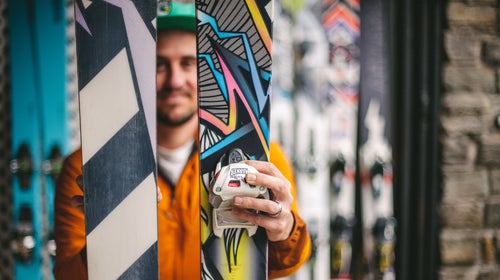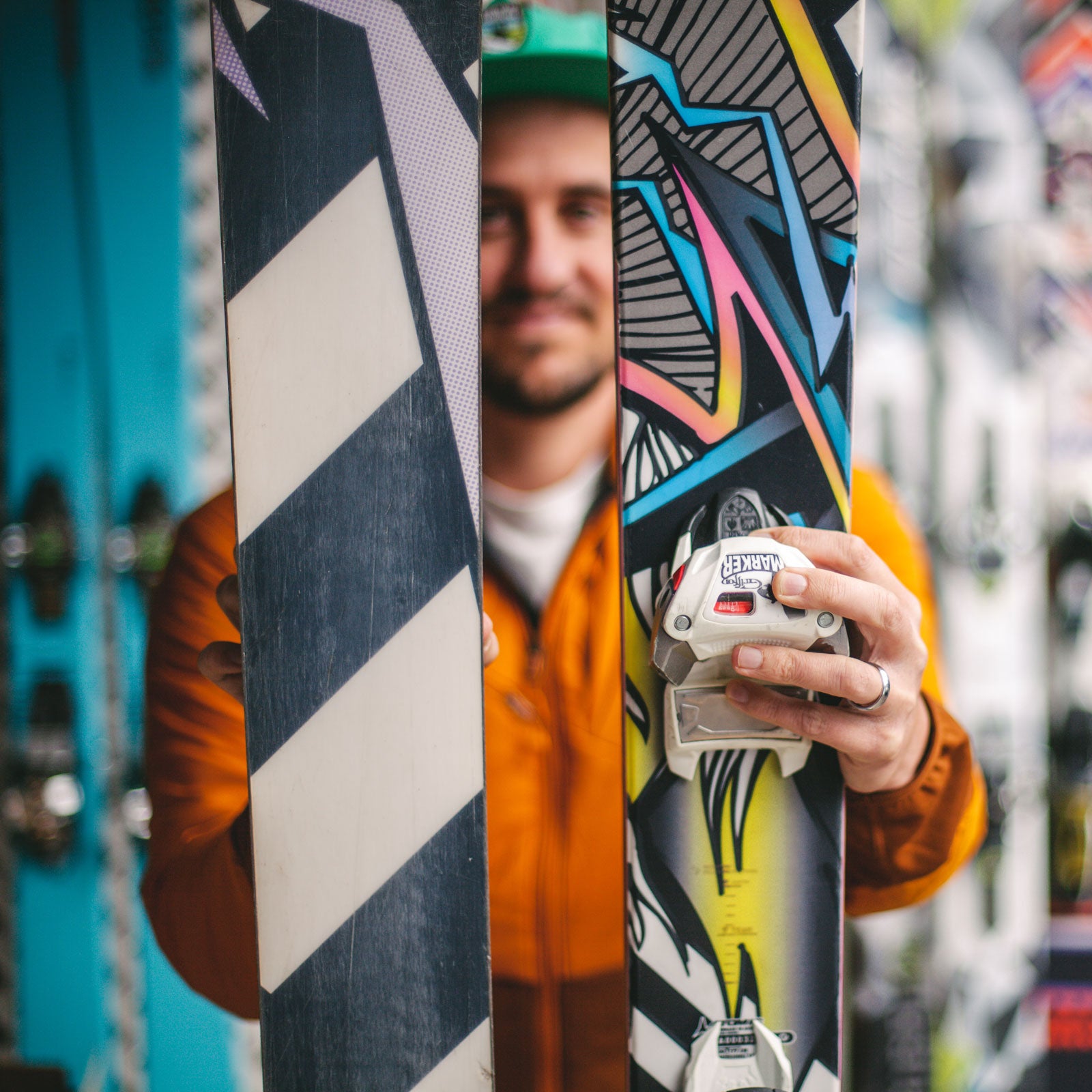Ski jargon can get straight-up overwhelming. Even a gearhead like myself gets bogged down in the endless talk of rocker, camber, and sidecut. In an attempt to wade through the clutter and clearly lay out the terms you need to know—as well as what they really mean for on-snow performance—I spoke with �����ԹϺ��� contributing editor Marc Peruzzi, who’s been testing skis for us, Mountain Magazine, and other publications for two decades.
Camber
If you place a cambered ski on a table and look at it from the side, the tip and tail of the ski will be resting on the surface while the middle arcs up. “Imagine a leaf spring on an old pickup truck,” Peruzzi says. Applying force on a cambered ski, as when you enter a turn, flattens it out, or “decambers” it. “Camber is a way for manufacturers to build energy into the ski that you’re getting back when you exit the turn,” says Peruzzi. “A cambered ski bounces back when you unweight it, providing a little pop.” That same camber also boosts grip and glide, because it distributes your body weight and increases edge contact.
Rocker
“Rocker is when the tip and the tail of a ski are flared up to help it float better in powder,” Peruzzi says. Just as a flat-nosed boat would move like a slug through the water, a ski with a flatter shovel—the front third of the ski—doesn’t get up on top of powder the way a rockered ski does. Rocker at the tail, meanwhile, makes for easier turning since less of the tail is in contact with the snow. Most all-mountain skis these days feature both camber and rocker.
Sidecut
“Sidecut is the top-down silhouette of a ski,” Peruzzi says, meaning it’s how the ski tapers from the tip to the waist and then widens again from the waist to the tail, resulting in an almost hourglass shape. Sidecut for a given ski is often displayed as three numbers: the first is the width of the tip, the second is the width of the waist, and the third is the width of the tail. The greater the difference between the ends and the middle, the deeper the sidecut. A more exaggerated sidecut creates a tighter turn—fun for arcing turns on groomers, but hourglass skis aren’t great in powder. Peruzzi says that if you’re primarily a backcountry or off-trail skier, you’ll want a wider and straighter ski to both float better in powder and allow for a looser turning style as opposed to the locked-in feel of a deep-sidecut carving ski. As for groomer skiing, a ski with more sidecut can make tighter turns (think slalom), and one with less sidecut has a wider turn radius (think super-G).
Width
Within sidecut, there’s a specific number to pay close attention to: the number of millimeters your ski measures at the waist (i.e. right beneath your bindings). It makes a big difference in how your ski will perform in different snow conditions. The wider the ski, the better it’ll float on powder, but the harder it’ll be to turn. If you live out West and spend most of your time off trail or are hitting up a resort after a storm, you’ll probably want wide planks around 105 millimeters, Peruzzi says. “When you look at places with less snow—like Summit County in Colorado—you’re going to want a ski that’s 95 millimeters underfoot. If you’re on the East Coast and are primarily an off-trail skier [read: making lots of turns on ice], you’re going to be looking at 85 millimeters.”
How Rocker, Camber, and Width Relate
Usually there’s a connection between width and the ski’s rocker and camber. “The more rocker the ski has, the fatter the ski is likely going to be,” Peruzzi says. “You want fatter and more rockered skis for deeper snow.” The rocker and wide girth will work together to help a ski stay on top of powder. Conversely, groomed trails and icy conditions play nicely with skinnier skis (for better turning), more camber (for even better turning), and less rocker (since you won’t need as much float).
Weight
Lighter is not automatically better. “Lightweight does not mean it will turn quicker or perform any better, and in a lot of ways it’ll perform worse,” Peruzzi says. Skis that are too light will deflect off anything and are more difficult to keep on edge in a turn. The high-end skis World Cup racers use are crazy heavy. But due to backcountry skiing’s growth, as well as frontside skiers’ desire for sticks that are easier to carry through the parking lot or hike up a bowl, the ski industry has been offering increasingly lighter skis in the past decade. Peruzzi says that the lightest you should go is 1,800 grams for backcountry skiers, or down to 1,600 grams for women.


